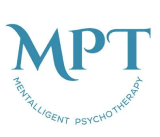CHANGE MY BRAIN? WAIT. WHAT?
So, our brain is the most complex organ in our bodies. We house 14-16 billion neurons in our thinking brain. Each cell carries neurochemical signals from one to another, giving action to our thoughts and feelings. Many signals are automatic, where our bodily functions operate. Many also are targeted by our conscious thought. These are the signals in our brains that we can control…that we can change.
Actually, changing your brain neural pathways is the positive outcome of counseling and psychotherapy. Mentalligent psychotherapy is a means of getting there.
For example, let me give voice to 10-year-old Brandon’s brain. His 7-year-old brother, Jordan, got home from school first and started gaming on their desktop computer. Brandon saw (prefrontal cortex, vision) what his little brother was doing. “Hey,” he thought, “He’s messing with my stuff (transfer to the hippocampus for memory comparison) just like he always does. Well, (hippocampus sorting) he won’t get away with it this time (hippocampus choosing fight option). I’ll show him (transfer to the amygdala, firing up anger).” Brandon then stomped over to the computer, yanked Jordan out of his chair, and shouted, “My turn, twerp. Get lost (transfer to the prefrontal cortex, analysis, poor executive function, verbal and tactile responses).”
Now, fast forward 20 years, and Brandon is addressing his anger management issues in outpatient psychotherapy.
“You know,” he begins to recount with his therapist an exchange he had had with a coworker, “this new hire, Davidson, has only been with our marketing firm for a month. We were discussing re-hashing ideas for a new ad campaign at the water cooler yesterday morning. I came up with an original approach, and we joked and laughed about how well it might be received in the staff meeting.”
“Well,” Brandon continued, “don’t you know that later that very afternoon, during our staff meeting, this jerk pitched my idea without giving me any credit, and the boss loved it (prefrontal cortex, auditory).”
“Wow! How did you handle that?” I asked.
“Well, I’ll tell you what I wanted to do (transfer to hippocampus). I wanted to jump across the table, wrap my hands around his neck, and choke the truth out of him, that it was my idea and he was taking credit that was meant for me (hippocampus sorting, 10-year-old memory flashed, fight option, transfer to the amygdala, rage chosen, transfer to the prefrontal cortex, analysis, unhealthy executive functioning, visual, auditory, tactile response).
“Now, instead, I heard his bootlicking (prefrontal cortex, auditory), took several deep breaths (transfer to hippocampus, freeze option), gave myself a pep talk (transfer to the amygdala, reassurance, calm, commitment to change), and smiled at Davidson across the table (transfer to the prefrontal cortex, analysis, healthy executive functioning, visual, tactile response).”
This therapeutic outcome, borne out of multiple sessions of mentalligent psychotherapy, sheds light on how concerted therapeutic intervention can generate new neural pathways for specific circumstances, the expression of neurogenesis.
Over time, and with much concerted practice, the former neural pathways wither for lack of use. The new ones strengthen, generating reinforcement, and then they thrive as the new normal for the patient.
In my book, The Healing Journey: Overcoming Adversity on the Path to the Good Life, I share with you the process of changing your brain to reach your goals.
Blessings,
Jon
